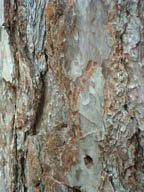collagraphs
 Yesterday I went to a workshop on collagraphs using carborundum. Carborundum is used in lithography and is fine pumice dust.
Yesterday I went to a workshop on collagraphs using carborundum. Carborundum is used in lithography and is fine pumice dust.In collagraphs it's used to create wonderful darks, where the carborundum grips the ink and creates intense colour.
This is one of my favourite methods of printmaking - I love the painterly qualities you can achieve with it. It won't make as many prints as an etching but enough for me.
The printing plate (shown left with traces of ink left on them) is made with Daler Rowney mountcard. Simple lines cut in with a craft knife will print as thin line, for thicker lines 2 cuts are made and the top layer of the paper between them is peeled away. Areas of darkness are created by peeling away the top layer, light areas are created by painting with wood glue and the very darkest areas are created by painting with wood glue and covering with carborundum.
When the glue is dry, the whole plate is sealed with shellac varnish (brushes cleaned in methylated spirit).
When this is dry the plate can be inked up with printing inks and printed in a printing press. Because it's an intaglio proces - the inks being in the incised lines and not only on the surface as with relief methods like lino - a press is essential.
The image is developed from sketches done at the beach as the sun set and darkness fell. There were wonderful patches catching the last of the light and silhouetted shapes.
It's a long time since I'd done a collagraph until the recent trees, which I haven't had time to work on further yet, and being in a workshop was a great reminder on techniques and problems.
I managed to get 10 coloured prints done (5 from each plate) and some monochrome ones. Because of the way that the plates are inked up it isn't possible to use many colours - these were done with scarlet and prussian blue, the terracottas and browns happening where I mixed these when rubbing the ink into the plate.
Here are some of the prints. They all want a little more working on but I'm pleased so far. Unlike etching where each print is the same, these will be quite different, depending on the inking up and the work done when they are dry.
Sometimes, depending on how much ink was applied, it is possible to get a second print before re-inking and get a paler print, often with a really nice feel, very different from the more intense version. These show a print from each plate - a first print from one and a second print from the other.





Comments